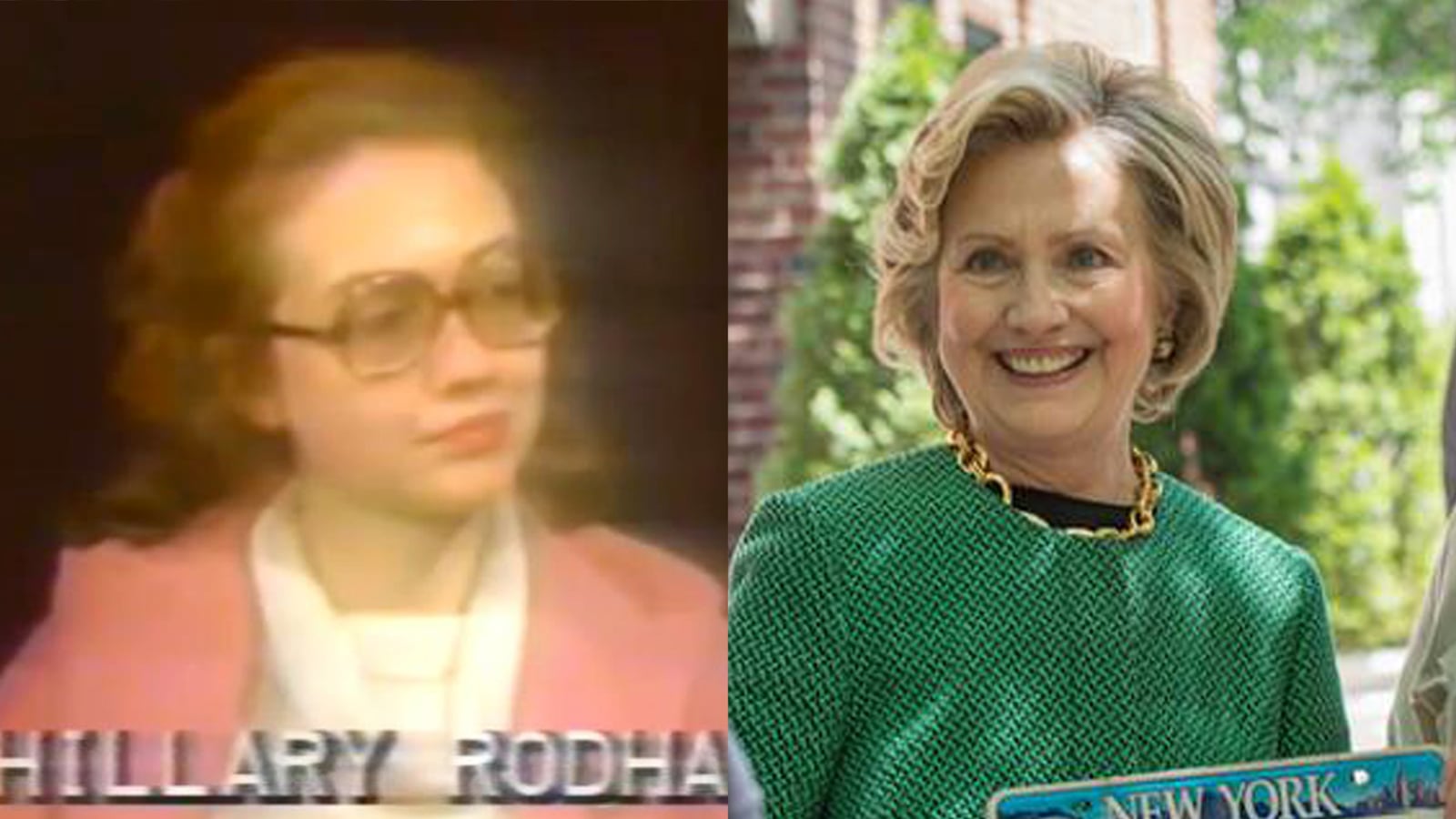The biggest problem with the premiere video out of Hillary Clinton’s Brooklyn campaign headquarters isn’t the video itself.
Yes, Clinton is benignly stiff; yes, the people-on-the-street interactions are credulously gushy and earnest. This is a defiantly non-hipster version of Brooklyn, complete with stroller cameos and an enthusiastic ethnic cabbie: “I tell everybody in my car to vote for Hillary Clinton!” he exclaims, suggesting that maybe there is a form of advertising more annoying than the auto-play mini-televisions in the back of New York taxis.
No, the problem with the video is that it’s introduced as, “How do Brooklyn residents feel about their new neighbor?” This is neither the question the video answers, nor is it the one anyone was asking. (And people are asking a lot of questions!) The question is a retro-fitted push-poll, reframing inoffensive fluff as faux-folksiness (“fauxiness?”). There’s an inherent defensiveness that begs some kind of Upworthy twist: “How do Brooklyn residents feel about their new neighbor? The answer will leave you speechless!”
Presenting b-roll of Clinton on a celebrity stroll as how residents really feel just highlights how much the video is not genuine—and how strongly the Clinton people want to convince you it is. It’s not enough that the video shows Clinton performing standard famous-person duties with above-average grace (if not exactly ease); no, it has to be revelatory proof—and not proof of something true about Clinton herself, but of how people feel about her.
Hillary’s public relations battles have, for decades now, been fought in that strange meta arena: We argue not about who she is, but about how people perceive her. We don’t debate whether she is genuine, but if people think she is.
To some extent, this is the default context for all political punditry. It is always easier to debate a nation’s mood than to do the hard work of sussing out its needs. But Hillary Clinton is an especially provocative case, in part because her campaigns and advisers, again and again, choose to meet the pundits and the media in that Thunderdome of perception rather than in the real world. Even when they want to fight in the real world, they beg for a decision about perception: How do Brooklyn residents feel?
The Brooklyn video is, after all, yet another introduction of Hillary. And an introduction for a woman who’s been in the public eye for three decades only makes sense in the context of Hillary’s eternal reboot.
Advisers have been introducing her for so long, perhaps they forget that she’s never really left the stage.
After all, Hillary is perhaps the best known female politician in the world. And that makes this exercise of endless introductions feel like part Memento, part No Exit. Hillary seems stuck in the first 15 minutes of a cocktail party for all eternity, doomed to introduce herself over and over.
What makes this absurdist play a real tragedy is that the non-stranger is a legitimately interesting person, someone you have already decided you like. If she didn’t keep telling you her name, and underselling all the genuinely fascinating things about herself in favor of bland platitudes and awkward attempts to create common ground.
“I understand you were Secretary of State.”
“Aren’t grandchildren wonderful?”
“Sure. What was it like to meet so many world leaders?”
“I have a grandchild! Like many other ladies my age!”
One can only endure so much of such a conversation before edging quietly away. Indeed, the beginning of Hillary’s declining polling numbers wasn’t Benghazi or the email scandal, it was when she left the State Department. It was when she stopped doing real work and started working on her image.
It’s testament to Hillary’s more substantial gifts—beyond small talk—that her constant effort to remake the first impression does not hurt her more. There is a talented administrator and passionate advocate behind every re-applied “Hello, my name is…” sticker on her pantsuit.
Voters saw the woman behind the marketing campaign during the Lewinsky scandal, during her nose-to-the-grindstone turns in the Senate and State Department, and, most dramatically, between the cracks of the façade during the 2008 campaign.
Her moment of peak cultural penetration came with the “Hillary texting” meme: a photo snapped of her unawares, immersed in a task, completely apart from the conversation we might have about her and exerting no control over it.
Polls attest to how well Americans respond when Hillary stops shaking hands and just gets to work. These data points should direct her campaign away from telling us how to feel about her and instead to just letting her be herself.
Ironically, the other “new” Hillary video out last week was also a re-introduction of sorts—perhaps the very first: a half-hour interview from 1979 with young Hillary Rodham, recently having becoming the First Lady of Arkansas.
It’s easy to pick apart what about the video doesn’t “work” for today’s audiences. Mostly, it’s the style, a preserved-in-acetate disco-librarian look: owlish glasses, Pepto-pink blazer and full skirt, and white turtleneck (though, the knee-high boots are pretty bitchin’).
But it’s really only the style that grates on a modern sensibility.
The interview itself is shockingly civil, though not without an undercurrent of sexism that dates the conversation. The public television host asks Ms. Rodham about keeping her name—“it lost [your husband] some votes”—and asserts that, “If you just wouldn’t be a practicing attorney, you see, then that would eliminate some of the problems of not being together.” He notes she doesn’t seem “all that interested in state dinners and teas and garden parties.”
What’s refreshing is how Ms. Rodham responds. She is straightforward but not chilly; she doesn’t agree but doesn’t argue—on the garden party front, she says, “I’m interested in everything. I’m interested in social events and civic events, as well as my own professional life.”
Pressed on the issue of her keeping her name, asked if that maybe makes people consider her “too liberal,” she tells the interviewer, “One cannot live one’s life based on what somebody else’s image of you might be… All one can do is live the life that God gave you, and you know you just do the best you can, and if somebody likes you or doesn’t like you that’s really in many ways something that you have no control over.”
That’s the answer of someone who only needs to introduce herself once.
So what happened to her? Bill lost re-election after that first term. The defeat reportedly crushed them both, and when he ran again in 1982, his partner on the stump wasn’t Ms. Rodham, but Mrs. Clinton. There is no way to read that change and not see at least a few grains of cynicism—the same moral calculation that the Clintons have used to justify or excuse almost every twist in image or message since then.
In 1982, it worked. Bill won, his career continued to careen forward, and the lesson they took from that cynical rebranding has never been unlearned—though I can’t help wonder if it was the wrong lesson. Was it, after all, her rebranding as “Clinton” that “worked,” or did Hillary Rodham’s talents sway people, because she was that self-assured young woman in the kick-ass boots? Who did people see? Which Hillary are they actually supporting today?
Maybe she does need to reintroduce herself. We’ve been calling her by the wrong name for 23 years.






